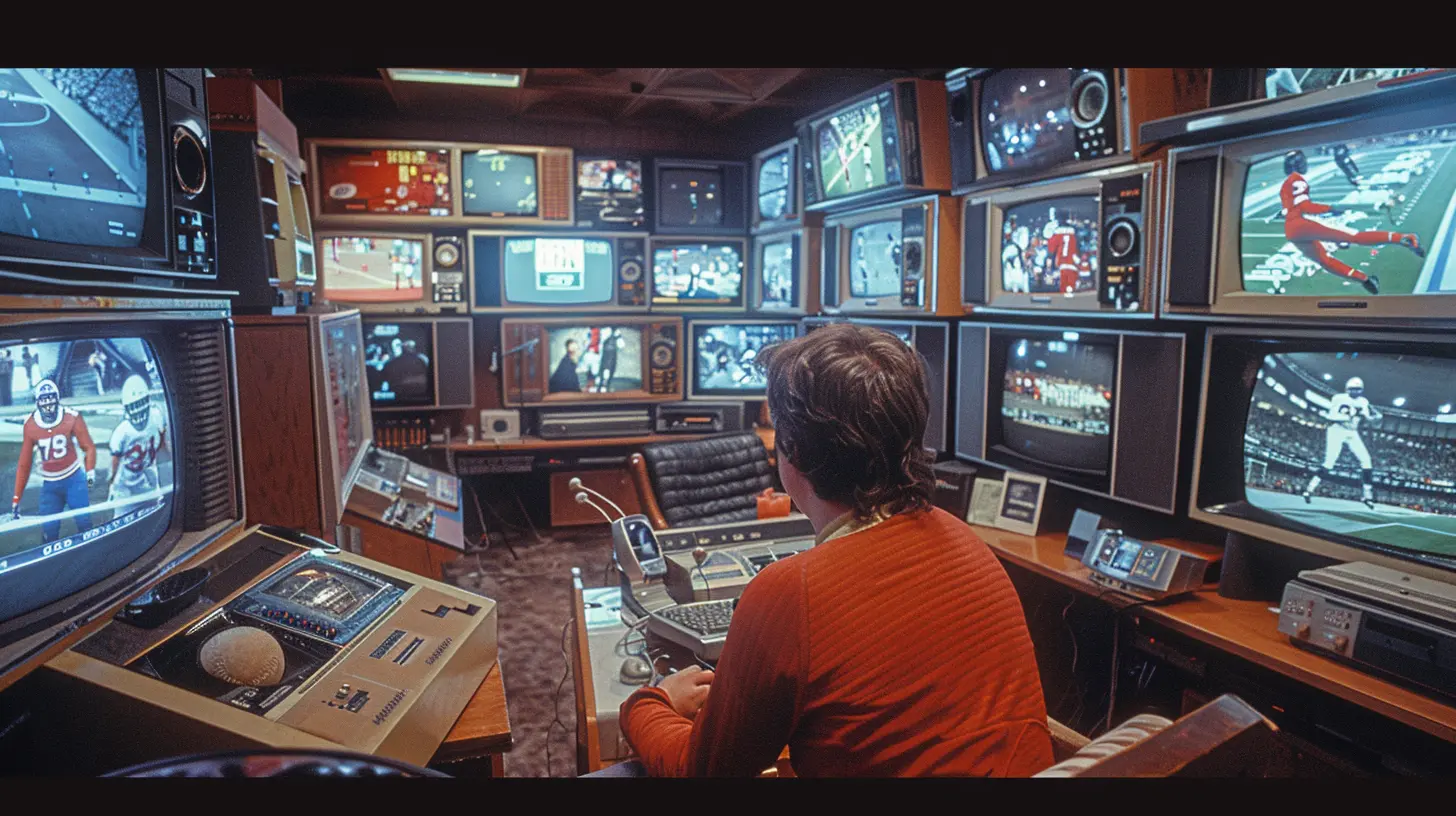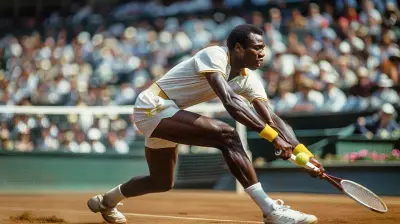The Evolution of Instant Replay: From TV to VR Technology
20 November 2025
Let’s rewind the tape — literally. Remember when a questionable touchdown or last-second buzzer-beater would spark heated debates among fans, players, and commentators alike? Now, thanks to instant replay, we can pause history, break it down frame by frame, and decide whether it was a game-winning shot or a total fluke.
But let’s be real — instant replay hasn’t always been the sleek, slow-motion, 360-degree experience we enjoy today. Nope, it’s come a long way from grainy black-and-white replays on tiny TV screens. And now? We’re stepping into the fascinating world of Virtual Reality (VR) where you can actually step inside the play.
So, grab your gear (or your popcorn), because we’re taking a deep dive into how instant replay evolved from clunky clips on television to immersive experiences that might just make you feel like the ref.
📺 Instant Replay’s Humble Beginnings: The Birth of a Game-Changer
Ever wonder how instant replay even became a thing?Well, let’s rewind to 1963. It was during the Army-Navy football game when CBS director Tony Verna made history by showing a play again — immediately after it happened. This first replay was jittery, a bit confusing, and actually had people wondering if the play was happening live again. Talk about a plot twist!
Still, the concept stuck. It was revolutionary. For the first time, viewers didn’t have to rely on memory or replaying the moment in their minds — they could actually see it again with their own eyes.
And so, the journey began.
🕹️ Taking Control: Replays Become a Fan Favorite
Fast forward to the late '70s and early '80s. Technology improved, and so did our appetite for replays. Networks started showing multiple angles. Slow motion became the standard. Highlight reels? Oh yeah, those were born from replay tech.By the time the '90s hit, sports fans expected replays. No replay? Cue the outrage. We’d grown addicted to watching that buzzer-beater in super slow-motion or breaking down a fumble from 3 different angles. Broadcasts became more interactive, more visual — and way more fun.
And let’s not forget the entertainment factor. Replays didn’t just tell us what happened — they added drama. Suspense. Theater. It was like watching your favorite movie scene over and over again.
🧑⚖️ Enter the Officials: Replays Join the Rulebook
At one point, replays weren’t just for viewers — they started influencing calls.Yep, we’re talking about the moment when sports leagues officially said: “Let’s use replays to make better decisions.”
The NFL took the plunge in 1986 with a limited review system. It wasn’t perfect, had its quirks, and let’s be honest — it annoyed a few fans. But it planted a seed. Over time, the system improved, and other leagues followed suit.
Think about it. In today’s sports, referees don’t have to rely only on what they saw in real time. They can zoom in, rewind, and get second (or third) opinions on critical calls. It’s a game of inches — and now we can actually measure those inches.
But even with all this, it still wasn’t perfect. That’s where technology stepped in, yet again.
🧠 Cognitive Tech & AI: Making Replays Smarter
It didn’t take long for tech companies to start flexing their muscles in the sports world. The goal? Make replays faster, smarter, and more accurate.Enter Artificial Intelligence and Machine Learning. Suddenly, systems could recognize players, track ball movement, and even map out decision trees in real-time. It wasn’t just about watching a replay — it became about analyzing it on the spot.
Take tennis, for example. The Hawk-Eye system tracks the trajectory of the ball down to the millimeter. In soccer (or football, depending where you're from), goal-line technology ensures we know whether the ball crossed the line. No more arguments. No more “he said, she said.” Just facts.
So now, we’re not only getting more details from replays — we’re getting better decisions because of them.
🧭 Instant Replay Meets 360-Degree Angles
Let’s talk angles. Because, honestly, sometimes a play looks totally different depending on where you’re watching it from.That’s why 360-degree replay technology became a game-changer.
You’ve probably seen it in big events like the NBA Finals or the FIFA World Cup. A player dunks, and the camera swoops around in a full circle, showing you every angle imaginable. Feels like The Matrix, doesn’t it?
This tech uses multiple cameras positioned all around the stadium, creating a virtual environment of the play. No more guessing where the referee was standing or how fast the defender was moving — now, you’re right there with them.
And it’s not just cool to look at — these angles help refs make fairer decisions and give fans deeper insights into the game. It’s like having your own backstage pass to sports history.
🤯 The VR Revolution: Replays Just Got Real
Here’s where things go from awesome… to absolutely mind-blowing.Virtual Reality has officially entered the chat.
Picture this: You’re not just watching the final play of the Super Bowl — you’re experiencing it from the quarterback’s point of view. You see the field, the defense, everything. You turn your head, and the stadium moves with you.
Welcome to VR-powered instant replay. Instead of watching things unfold on a flat screen, you’re stepping inside the game.
How is this done? Thanks to a combination of 3D modeling, real-time data capture, and immersive tech, companies can recreate plays in a fully digital, interactive space. These aren’t just replays — they’re re-lives.
For training, this is a gold mine. Coaches and athletes can break down plays in fully immersive environments, actually walking through what happened. For fans, it’s an entirely new way to engage. Imagine re-living your team’s championship-winning play from 10 different views — without leaving your couch.
🏟️ Bringing VR to the Stadium Experience
You might be wondering — “Okay, but do I need a headset to enjoy this?”Not anymore.
Stadiums and arenas are beginning to integrate Augmented Reality (AR) and VR experiences right into the fan experience. You can pull up replays on your phone, see stats overlaid on players in real-time, or even enter VR booths in the concourse to rewatch key moments.
It's blending traditional sports with futuristic tech — and it's turning spectators into participants.
⏳ But What About the Downsides?
Don’t get us wrong. As magical as this all sounds, instant replay isn’t perfect.Long replay reviews can slow down the game. Sometimes, even with 10 camera angles, the decision remains controversial (looking at you, VAR). And VR? It still has barriers — including cost, access, and tech development.
Plus, there’s always the debate: How much tech is too much? Are we losing the human element of sports?
These are fair questions. But like every technological advance, it’s about balance. Using these tools to enhance the game — not replace it.
⚽ Where Do We Go From Here?
So, we’ve gone from rewind buttons to VR headsets. What’s next?Experts predict even more personalized and predictive replays. Imagine getting instant replays of your favorite player’s actions during the game, sent straight to your phone in real time. Or having AI predict future plays based on historical data and presenting them in VR.
There’s also chatter about Mixed Reality — where you blend real-world environments with live, interactive replays. Think Iron Man-style overlays that show player routes, speeds, and decision trees in your field of view.
And who knows? Maybe one day, you’ll be the ref — virtually stepping into every major call, equipped with more data than any official has ever had.
🎬 Wrapping It Up: More Than Just a Replay
Instant replay isn’t just about watching a play again.It’s about trust. It’s about fairness. And yeah… it’s also about making jaw-dropping moments even more epic.
From the grainy black-and-white reruns of the ‘60s to today’s jaw-dropping VR experiences, instant replay has come a long way. It’s changed how we view sports, how players train, how decisions are made, and how fans connect with their teams.
So next time you’re watching a replay — whether on your TV, your phone, or through a VR headset — take a second to appreciate the journey. Because this is one evolution that’s still far from over.
And between us? The future looks pretty amazing.
all images in this post were generated using AI tools
Category:
Sports InnovationsAuthor:

Umberto Flores

